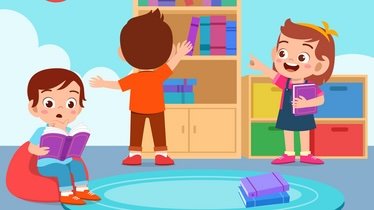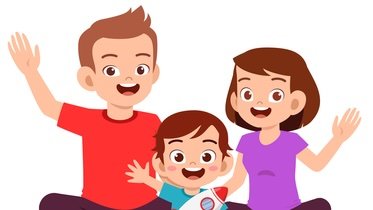The Olive Blog
•
The Olive Blog •

What Do I Do with My Child’s IEP Now?
Are you wondering what to do with your child’s IEP while their return to school is still in question? Don’t worry, you are not the only one! Individual Education Plans (IEPs) can be extremely confusing, even without the added uncertainty of a global pandemic. This newsletter will be one of many articles dedicated to helping parents understand and navigate their child’s IEP. Today we will talk specifically about what to do with an IEP while school closures and social distancing orders are still in place.

Developing a Visual Schedule
Most adults rely on visual schedules in their day-to-day lives. From a google calendar to a daily planner, being able to reference a visual schedule is a quick and simple way to ease anxiety and uncertainty. Similarly, childcare professionals recommend using a visual schedule with all children, regardless of circumstance, to prevent challenging behaviors that accompany uncertainty and stress. Luckily for parents, children have learned to use visual schedules as early as preschool. This is because teachers know how much visual schedules help their students! In this newsletter, I will walk you through how and why teachers use visual schedules, and how you can create your own at home.

Are Your Kids Demanding Your Attention?
The past few weeks have brought about drastic changes for most people. This is a confusing moment for adults and likely even more confusing for our kids. No matter how old a person is, everyone’s schedules, routines, interactions, and responsibilities have changed considerably due to COVID-19. I’ve heard from several parents recently, and they’ve all experienced new behaviors from their children, most of which revolve around neediness and attention-seeking.

Facilitating Directed Conversations
The past few weeks have brought about drastic changes for most people. This is a confusing moment for adults and likely even more confusing for our kids. No matter how old a person is, everyone’s schedules, routines, interactions, and responsibilities have changed considerably due to Coronavirus. One comment I’ve heard from several parents is that they’ve recently experienced new behaviors from their children, including neediness and attention-seeking.

Behavior Strategies During Social Distancing
I hope that you find the content of this article beneficial as you navigate this period of uncertainty; these are challenging times, and Olive Behavior Care is here to support you! This month’s newsletter will focus on a few strategies to implement during school closures and social distancing, specifically:
The “1 or none” strategy
Pausing during communication
Building structure and routine
The “I or None” Strategy

Shifting Your Communication Approach: Foster Deeper Relationships With Your Children
As a speech-language pathologist, I’m often approached by parents with some variation of the following: “well, yes, my child can talk, but why won’t they talk to me?” Of course, they don’t mean their children aren’t talking to them (unless we are talking about selective mutism, which is a topic for another day!) Instead, what these parents are referencing can generally be described as a lack of connection - having conversations rooted in emotion and open dialogue; children sharing their friendships, feelings, challenges, and innermost thoughts, and ideas.

Curb The Back To School Blues
Most of our children are now on winter break, and during this time of year, many parents often ask me questions such as: How can I help my child transition back to school? I feel like we will be starting the school year all over again after winter break! What should I do? Will my child be okay after taking so many weeks off of therapy and school? Well, parents, I am here to curb the back-to-school blues!

Breaking Down & Defining Behavior
Behavior intervention, behavior challenges—anything regarding the subject of behavior—can be incredibly daunting. And with good reason! We try our best as parents to ensure our children are happy, so when challenging behaviors arise, it can be disheartening and leave us feeling helpless. Alas, have no fear! I am here to shed new light on how to break down and define behavior so that you can find solutions that work.

Behavior Regulation: The Key to It All
Behavior regulation refers to our ability to be mindful of our emotional state and react functionally appropriately. Our emotional state depends on any possible feeling we may have; happy, depressed, comfortable, stressed, nervous, apprehensive, excited, or satisfied. Being mindful of our feelings means recognizing how we feel in any given moment or situation. The term functionally appropriate means that our behavior, a.k.a our behavior response to our emotions, is socially relevant and helps us to express our needs or feelings to others.

Promoting Behavior Regulation
Behavior regulation plays a crucial role in our ability to control emotional reactions. Luckily, there are numerous ways to promote behavior regulation! Today, we will learn about one of the most effective strategies: visual schedules.

Positively Positive
There are moments in life we can never forget. Moments that leave you without words while your mind races in reaction. As a Special Education teacher, I had those moments often. But this particular moment shaped my career as a behavioral therapist and drives my practice to this day. The following story is about a moment that has stuck with me throughout my career working with children with special needs.

